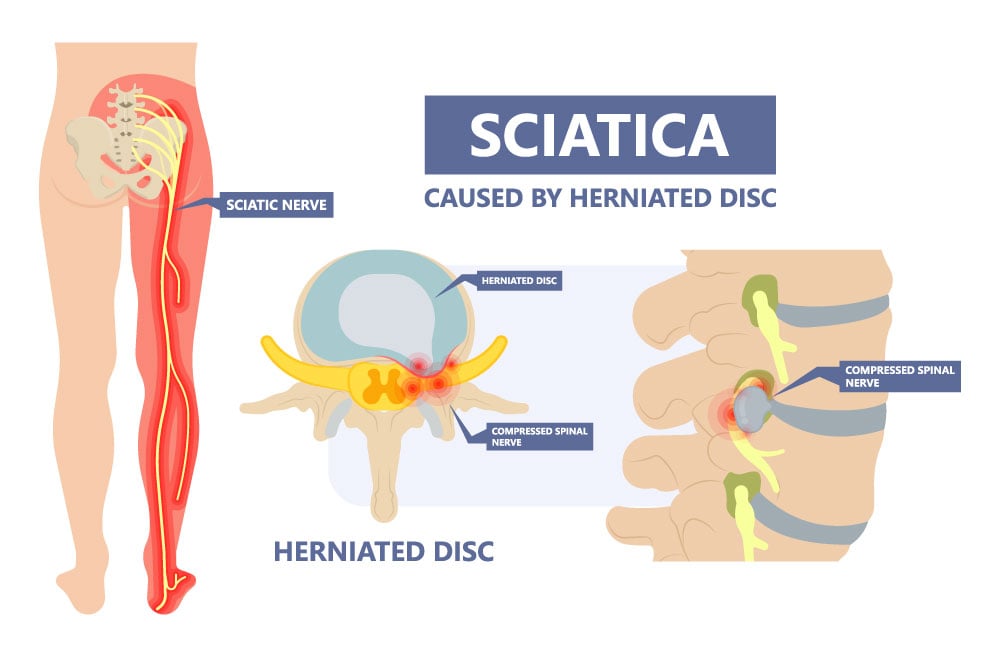Overview
A lumbar epidural steroid injection or (LESI) is an injection of a potent anti-inflammatory medication into the epidural space of the lower back using x-ray guidance. The epidural space is an area of the body where the spinal nerves are located and often inflamed resulting in significant pain and sometimes weakness. The steroid medication provides an anti-inflammatory effect to reduce pain, nerve swelling, and irritation.

What conditions are treated with Lumbar epidural steroid injections?
Lumbar epidural steroid injections (LESI) are intended to treat multiple causes of both back and leg pain. Common conditions treated with lumbar epidural steroid injections include: sciatica, “pinched nerves”, radiculopathy, herniated or bulging discs, spinal stenosis, and pain from previous back surgeries.
How is the procedure performed?
Our team will help position you to make sure the procedure can be completed with the least amount of discomfort for you. The skin is cleansed with a sterilizing solution (chlorhexidine) and a sterile drape is placed. A local anesthetic medication typically (Lidocaine) is given to numb the skin. Next, fluoroscopy (x-ray) or ultrasound is used to find the target. A thin needle is directed to the desired location. Contrast dye may be injected to confirm the correct placement of the needle. A local anesthetic and/or steroids are then injected. During the entire procedure you will be constantly monitored by our team. After the injection a small bandage is placed on your skin. You will be given time to make sure you feel good and are not having side-effects before leaving the clinic.
What medication is injected?
The injection includes a combination of anesthetic (lidocaine or bupivacaine) and steroid (cortisone, Kenalog or dexamethasone). The local anesthetic will be responsible for the immediate relief and the steroid will give you the more long-term relief.
Does the procedure hurt?
The procedure is typically well tolerated. Often times a burning sensation from the anesthetic is the most uncomfortable part of the process. During the procedure a pressure sensation is often experienced this typically resolves within a few minutes. Minor soreness for a week after the procedure is normal.
How long does the procedure take?
The procedure typically takes about 15 minutes to perform. Please plan on being at the clinic for about 1 hour to allow for pre and post-procedural safety protocols.
How quickly will I get relief?
It can take up to a week for the steroid medicine to reduce pain and inflammation. Our team will follow-up with you and determine any future injections.
How long can I expect the relief to last?
Every patient is different. Most patients get reduced pain lasting 2-4 months. Some patients can get relief lasting greater than a year.
How often can the procedure be repeated?
Depending on results and providers discretion the injections may be repeated up to 3-4 times per year to sustain pain relief.
Will the steroid injection result in more health problems long term?
There is minimal absorption from steroid injections to other areas of the body. For this reason, many of the side effects that occur with systemic steroid usage do not occur with local steroid injections. The systemic side effects of weight gain, osteoporosis (thin bones), and increased blood pressure should not occur with steroid injections.
Can I have the injection if I have diabetes?
Yes. It is important to control your blood sugar before and after the injection. Diabetic patients may experience a temporary increase in blood sugar.
What are the risks and side effects?
Risks and side effects are minimal and serious complications are rare. We take every safety pre-caution to ensure safety. Potential risks may include but are not limited to: vasovagal response (passing out), new or increase of pain, infection, bleeding, permanent skin changes, allergic or unexpected drug reaction with minor or major consequences, and unintended nerve injury.
Pre-Procedure Information
Please let us know if you have an active infection, are using antibiotics, or are using blood thinners.
Should I take my normal medications as scheduled?
Yes. Continue prescribed medications as you typically take prior to procedure.
What If I am on a Blood Thinner or Aspirin?
Anti-coagulation is often stopped for a short period of time prior to injection. Please speak with your primary physician if you take blood thinners. To make sure that you can safely stop taking these medications.
Do I need a Driver?
Yes. For your safety we require a driver to ensure safe return home.
Can I eat the day of the procedure?
Yes. We recommend eating a light meal.
Can I get sedation or anesthesia?
Most patients do well without sedation. Light sedation with oral medications is sometimes provided at the providers discretion.
What if I am pregnant?
There are serious potential risks to an unborn fetus from any imaging study, including x-ray and fluoroscopy. If there is any chance you may be pregnant, please postpone this procedure until it can be confirmed that you are not pregnant.
Post-Procedure Information
When can I drive after the procedure?
We recommend resuming driving the next day.
What can I do if I am sore or have pain after the procedure?
Ice packs can be applied to the area for 20 minutes per hour. Over the counter Tylenol and Motrin can be used to aid with any discomfort.
What are my restrictions after the procedure?
Typically, you may resume light activities on the same day following your procedure. Physical therapy can be re-started with in 24 hours. We recommend returning to work the day after the procedure.
When can I shower?
Showering the day of the procedure is allowed. For 24 hours you are asked to refrain from submerging or swimming in water. Keep the bandage on for one day.
When do I come back for a follow-up visit?
We follow-up with all of our patients after their procedures. We typically see patients back in 2-4 weeks.
